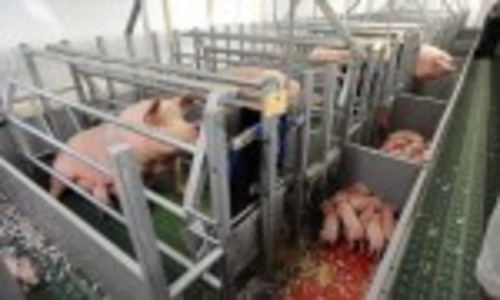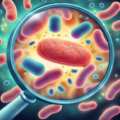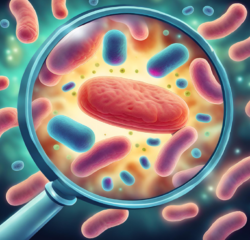With the trend in commercial livestock to raise large numbers of animals in small and confined spaces, fed a regular diet of antibiotic doused feed, it should be no surprise when those animals develop infections, even antibiotic resistant infections. According to the third annual report released by the FDA’s Center for Veterinary Medicine in 2012, antimicrobials sold or distributed for food-producing animals are increasing, rapidly, far and above human use, and despite recommendations to the contrary. In 2011:
- 29.9 million pounds of antibiotics were sold in the US for meat and poultry production
- 7.7 millions pounds of antibiotics were sold in the US for humans
Along with that increased usage comes an increased incidence of antibiotic resistant strains of bacteria found in the animals, the retail meats sold for human consumption and in the humans who raise these animals and consume these meats with overuse of fluoroquinolone antibiotics being one the main culprits.
More recently, researchers investigating the persistence of livestock associated antibiotic resistant staphylococcus aureus among the industrial hog workers in North Carolina, found that fully 86% of the workers (n=22) carried the livestock staph bacteria nasally over the course of the two week testing period that sometimes included 96 hours away from the hog farms. One worker carried methicillin resistant staphylococcus aureus (MRSA) persistently and 46% of the workers carried the more virulent strain of mutli-drug resistant staphylococcus aureus (MDRSA) at some point during the test period. The researchers observed that carriage of the bacteria continued even when the workers were away from the farms. Although it should be noted, most workers were at the farms over 50 hours per week and rarely had more than 24 hours off unless ill (in itself, a cause for concern).
Traveling Bacteria
As we learn more about the microbial environment, it becomes clear that organisms, human and animal, are walking bacterial ecosystems, with trillions of microbes upon and inside us. Which populations of bacteria predominate have as much to do with the host organism’s health and habits as with his/her exposures. Bacteria and other microbial pathogens are emerging as a flexible interface of sorts, between us and the environment.
From birth onward which bacteria thrive is moderated by the environment. A child born by cesarean in a hospital adopts the bacteria of the hospital setting, even the pathogenic ones, whereas a child born vaginally develops much of the mom’s microbial influence. More interestingly, a child born vaginally and at home, adopts the microbial patterns of her surrounds, even from that of the family pet. Indeed, across the lifespan, our bacterial exposures influence our microbiome. Living with pets, eating habits and environmental exposures change our microbial ecosystems, regularly and continuously, as we adapt to our surroundings – and these changes happen quickly.
Change the diet and the gut microbiome changes within days. Spend time in the hospital, your microbiome changes within hours. Buy a dog, enter a relationship, ditto. The totality your environment influences your microbiome. And so, it should be no surprise that the animals raised in deplorable conditions, would carry dangerous and deadly bacteria more frequently than animals raised on organic feed and in a more healthy environment. Similarly, it should no surprise that those who work with those animals carry those same deadly bacteria and that their health and the health of their families could be impacted by microbial environment in which they work, but it is.
Even though the importance of the microbiome has only recently come to light, common sense should tell us that the way we raise and grow our food is not healthy for the animals or for us. I suspect, our hunter-gatherer ancestors would not consume diseased animals, understanding the risk of illness to themselves, but we do, every day. Perhaps it is because we do not see the animals and the connection between their health and ours is lost; perhaps it is because some of these animals look healthy bolstered by growth hormones, antibiotics and other chemical toxicants; perhaps it is because we don’t want to see or to think about what we put in our mouths. Whatever the reason, commercial livestock practices are becoming increasingly dangerous to human health. Whether we recognize those dangers or not, we will bear the costs in the chronic illnesses that raising and eating those animals initiate.




